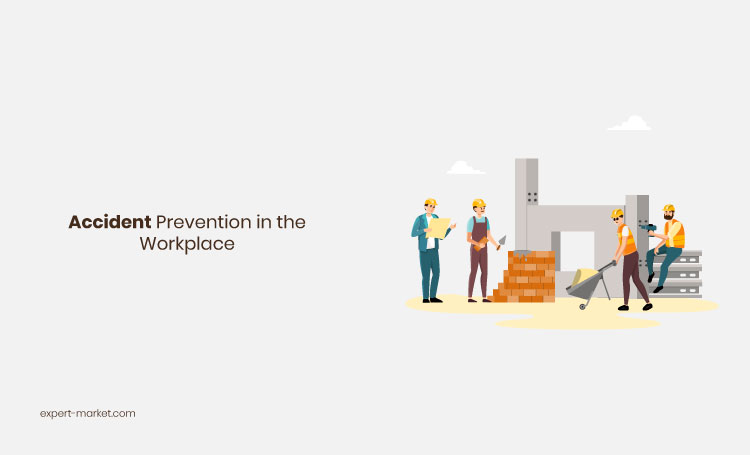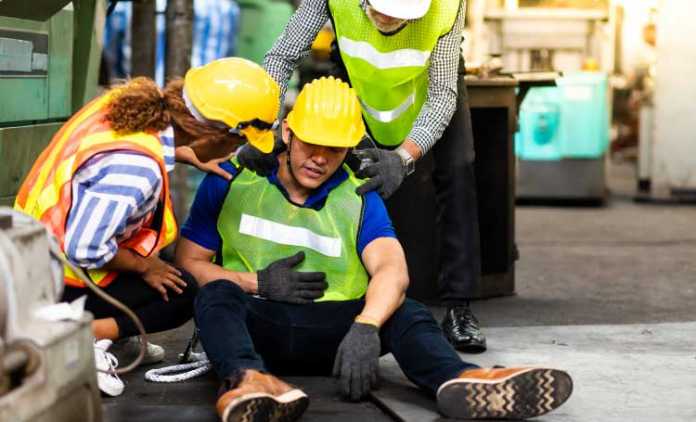Whether you run a small office or a big one, the likelihood of accidents is always there. In fact, workplace accidents may occur even more frequently than you think. The danger is they can happen when you least expect them to. It happens as a surprise, more so when you’re least prepared for it.
If you’re lucky enough, the injuries experienced are only minor like through a slip and fall or trip and fall. In extreme instances, however, what could’ve been an avoidable accident has now resulted in a permanent injury. While no one has any control over accidents happening, you can at least take proactive measures to control their happenstance. This is best achieved by employing good safety practices in your workplace.
You can effectively reduce the likelihood of workplace accidents by going through these safety practices:

1. Educate Employees And Management Staff
Many workplace accidents happen when employees and the management staff aren’t educated on the various equipment and tools used in the workplace. This results in the misuse of certain tools and equipment. As Protex AI explained in a guide on how to avoid hazards in the workplace, developing safety training programs for employees is critical as it helps ensure they understand how to properly use equipment. When your team fully knows how to operate the tools correctly, the chances of an accident are significantly reduced.
Apart from education and proper training on using the right equipment and tools, you should also be open to the idea of providing certain employees with supplemental training on matters like body mechanics. This is important for those who go through a lot of heavy lifting and moving as a part of their job. Through supplemental training, the likelihood of strain and injuries can be significantly reduced.
2. Provide A Safety And Health Handbook
Upon hiring and onboarding, the new employees should be provided with a safety and health handbook or manual. This ensures that even during their first day of work as new members of the organization, your new hires are on the same page with the rest of the team as to health and safety hazards.
The company handbook you provide should be comprehensive enough to outline the health and safety protocols that are in place. This should also include any necessary precautions as well as the remedies that employees have as a matter of procedure to ensure their safety at work.
Remember, workplace safety isn’t just the responsibility of the safety officers or HR managers. It has to be a concerted and shared effort with everyone in your team. In this way, accidents would be reduced all across the board.
3. Establish Good Housekeeping Practicing
Housekeeping relates to the sanitation and cleaning practices you employ in your workplace. Good housekeeping is crucial, and it’s always a tag team with safety. A cleaned and organized workplace is less prone to safety hazards.
If you notice that the incidence of accidents is getting quite high, it may be an indicator for you to improve your housekeeping practices. This isn’t a one-time thing. It’s about creating a routine either for your in-house cleaning team or by outsourcing professional cleaners.
A good housekeeping program is achieved through these steps:
- Be advanced with your planning. This enables you to learn more and have into order what needs to be done and how to do certain tasks. During your planning phase, you should have a strict set of measures as to what the workplace should look like at the end of every working day.
- Assign responsibilities. This is an important step to undertake to ensure that everyone in your cleaning team has a job to do. It also ensures all cleaning tasks are achieved and done. Otherwise, if you don’t assign tasks, it’s easier to fall short on cleaning some areas of your workplace in favor of others.
- Implement a cleaning program. This step involves establishing your set housekeeping practices as an overall part of your daily routine.
4. Get To Know The Safety Vulnerabilities In Your Workplace
Establishing safety practices to avoid workplace vulnerabilities isn’t a uniform approach that you take by simply copying the safety practices done in another workplace. Remember that every workplace is different. Each has its respective vulnerabilities, depending on factors like the following:
- The equipment used;
- The workplace layout and size;
- The kind of work being done in the workplace;
- The number of staff.
Good safety practices entail getting to know your inherent safety vulnerabilities in your workplace. That way, you can be certain that whatever safety measures you have are enough to mask the dangers present in your workplace. Pay extra attention to the accidents that commonly happen in your workplace so you can bring light to those risks and mitigate them.
5. Undergo Regular Health And Safety Audits
Even the most established and safest workplace will experience an accident one way or another. No one is saved from the possibility of those shortcomings. This is the reason why a regular health and safety audit is very important. As you go through this process, you can do a check on any potential problem areas that aren’t yet addressed. Or, perhaps your workplace is still practising obsolete practices that no longer contribute to the safety of your workplace.
A good health and safety audit shouldn’t be undertaken only by your in-house team. Rather, it’s still best to designate an external company to do this check at regular intervals during the year. This ensures transparency and that the necessary changes can be done effectively.
Final Words
Given the possible degree of severity of some workplace accidents, it’s all the more important to stay on top of the best safety practices. It’s a proactive approach to ensure your workplace is safe for everyone within the premises.
Above ensuring the safety of your team and clients in your workplace, abiding by safety practices also means compliance with legal standards and requirements. The last thing you want is to be held accountable for injuries or death that may happen to your employees all because you failed to abide by the minimum safety requirements to prevent workplace accidents. Consider the ideas mentioned here as you take proactive measures in keeping your work environment safe for everyone.



























